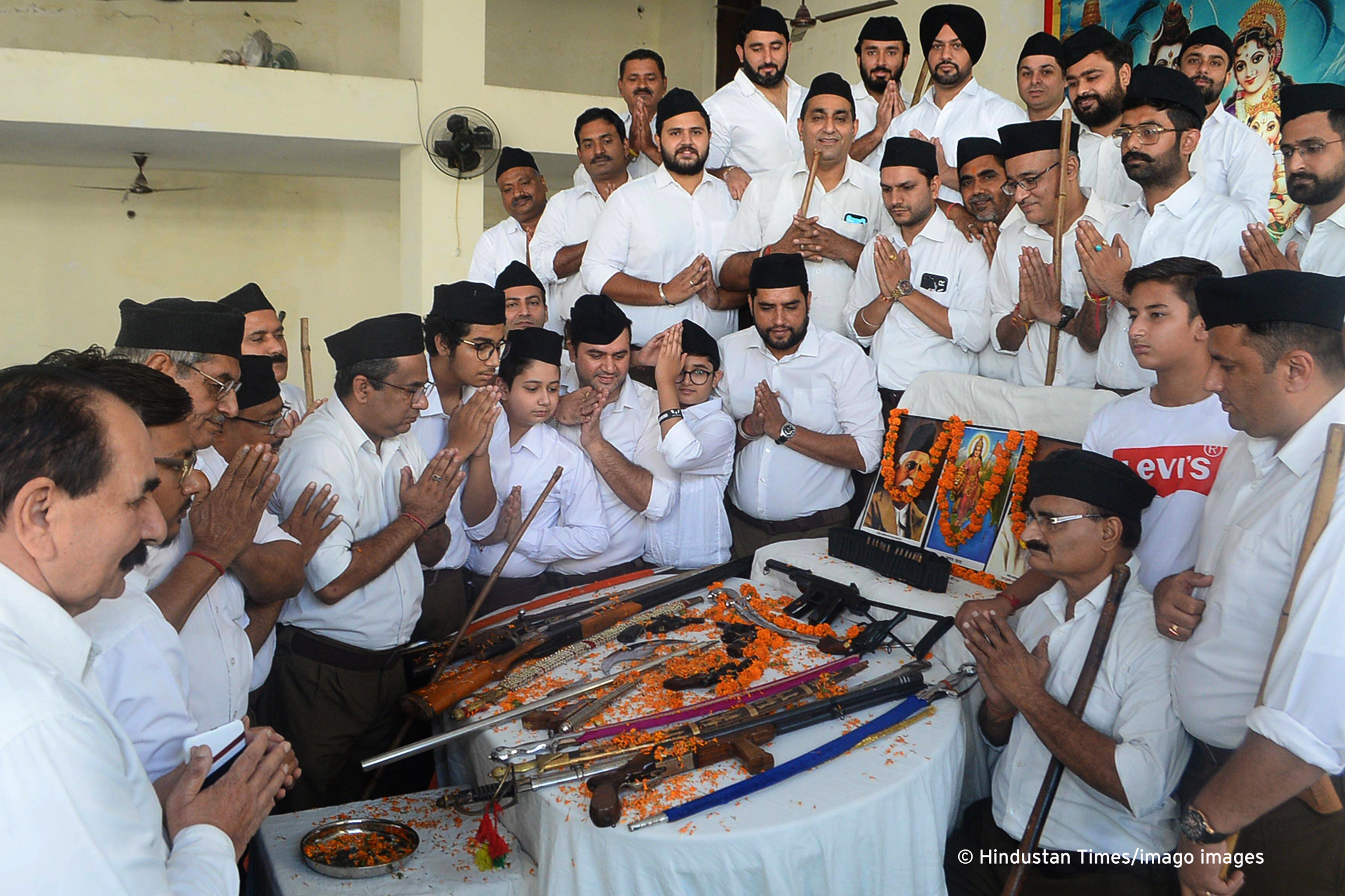Authoritation pseudo-democracy in the making?

The Economist Intelligence Unit calls India a "flawed democracy". In the same vein, the annual Freedom House report, which assesses the state of democracy around the world, only lists India in the category "partly free". Things have been deteriorating since Prime Minister Narendra Modi’s Hindu-supremacist Bharatiya Janata Party (BJP) came to power in 2014. With not even 40 % of the nation’s vote, it won a thumping majority in the parliament. That happened again in the election of 2019.
There is a troublesome pattern of people being silenced after daring to criticise the government and its supporters. Consider the faith-based violence in the small eastern state of Tripura on 23 October 2021. Extremist mobs hounded Muslims in pogrom-like scenarios, claiming to take revenge for similar anti-Hindu action in neighbouring Bangladesh. The police are now investigating some 100 people who spoke out against Indian mobs in Tripura on social media. The charge is that they breached the draconian Unlawful Activities (Prevention) Act (UAPA).
Below is an example of anti-Muslim mobs in Tripura. A key distinction between communitarian violence in Bangladesh and in India needs to be made: India’s communitarian violence receives support and justification from state & ruling Hindutva ideology.
pic.twitter.com/6pY4rO3R9l— Sana Saeed (@SanaSaeed) October 28, 2021
Only Hindus are real Indians?
In spite of India’s secular constitution, Hindu supremacists pretend that only people of their faith are real Indians. Two years ago, there was a broad-based social movement against the introduction of a citizenship law that discriminated against Muslims. The movement’s epicentre was in Shaheen Bagh, a Delhi neighbourhood. It also opposed police violence, demanded jobs and called for better protection of women. Government propaganda discredited this overwhelmingly non-violent campaign as a dangerous insurgency. In truth, it was defending the constitution.
The movement ended in February 2020 with the COVID-19 lockdown, after parts of Delhi were rocked by communal violence. Mosques were burnt down and twice more Muslims than Hindus died. As is happening now in Tripura, the perpetrators of anti-Muslim violence largely enjoyed impunity, while many of those who supported the pro-secularism protests were accused of UAPA breaches.
[embed:render:embedded:node:38637]
Early in 2021, another protest movement erupted. Farmers vehemently opposed government plans to allow agriculture to be guided by market forces. The plans were withdrawn in November, but when protests were gaining momentum, the government resorted to repression and provoked violent clashes. Many protestors belonged to the Sikh community and they were targeted in particular. They are not Hindus.
Anti-minority hatred spreading on social media
Last year, Twitter was ordered to block accounts that favoured the farmers’ protests. The government claimed they were inciting public disorder. Facebook and Twitter were persuaded to shut down millions of accounts for perceived offenses of this kind. Anti-minority hatred, however, keeps spreading on social media without BJP-run authorities intervening.
The shutting down of Internet services during protests has now become a norm. Indeed, Internet access in Kashmir is permanently limited to certain websites the government approves of. In 2019, it dissolved what up to then had been the country’s only Muslim-majority state and afterwards shut down the Internet there completely for months.
Who in the apparatus of the Indian state will be held responsible for this tragedy? Make no mistake — it is the Indian state that killed Fr. Stan Swamy, who was such a passionate crusader for social justice. https://t.co/gAbZL2Y8aI
— Jairam Ramesh (@Jairam_Ramesh) July 5, 2021
According to official data, more than 8,300 people – among them priests, professors, poets, students, lawyers, journalists and stand-up comedians – were arrested and jailed in the last five years. Even law courts have qualified this as abuse of power. The most prominent victim was perhaps Stan Swamy, a Catholic priest, tribal rights activist and Parkinson’s disease patient. Accused of terrorism, he died in detention in July 2021.
Various laws are used to act against government critics. Even long established media brands such as Dainik Bhaskar, a daily newspaper with a circulation of more than 4.5 million, is not safe. After it exposed government efforts to hide the true number of COVID-19 deaths, it is now being hounded with tax raids. It is telling, moreover, that Amnesty International and Human Rights Watch no longer have offices in India.
Mira Mandal
© D+C | Development & Cooperation 2022
You may also like:
The "India Love Project" on Instagram: Fighting hate with love
Indian Muslim Sadia Dehlvi: "The soul of India is inclusive, pluralistic, and democratic"
Moosa Raza's "In Search of Oneness": What do the Bhagavad Gita and the Koran have in common?